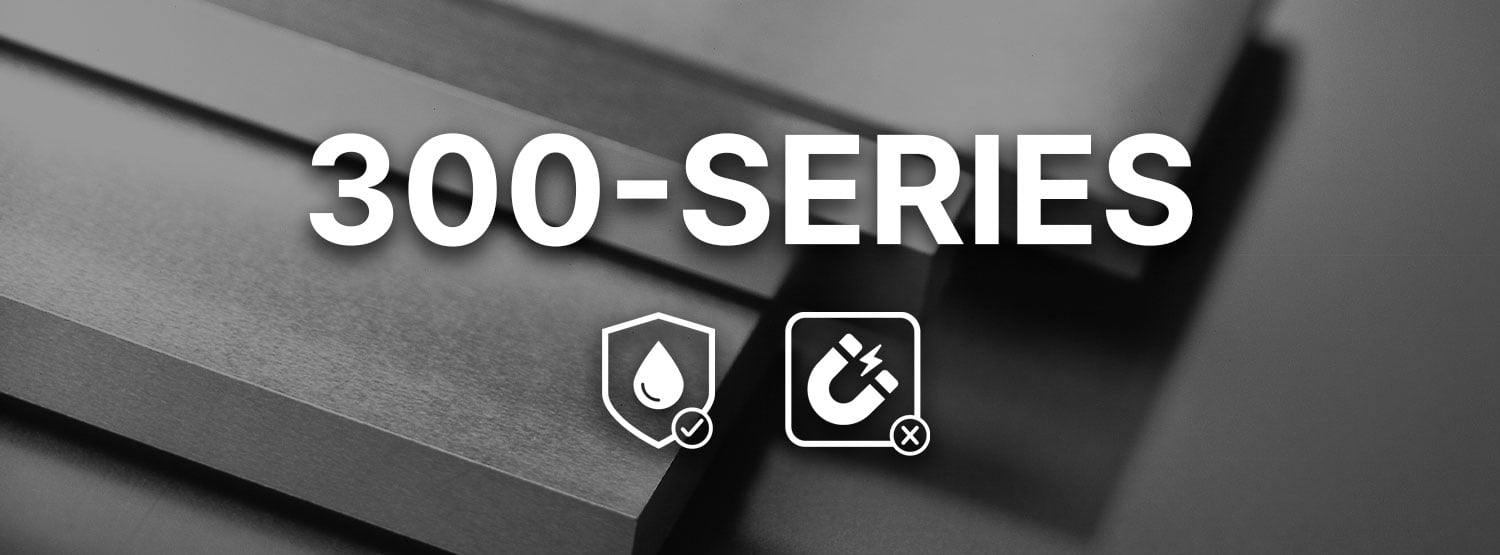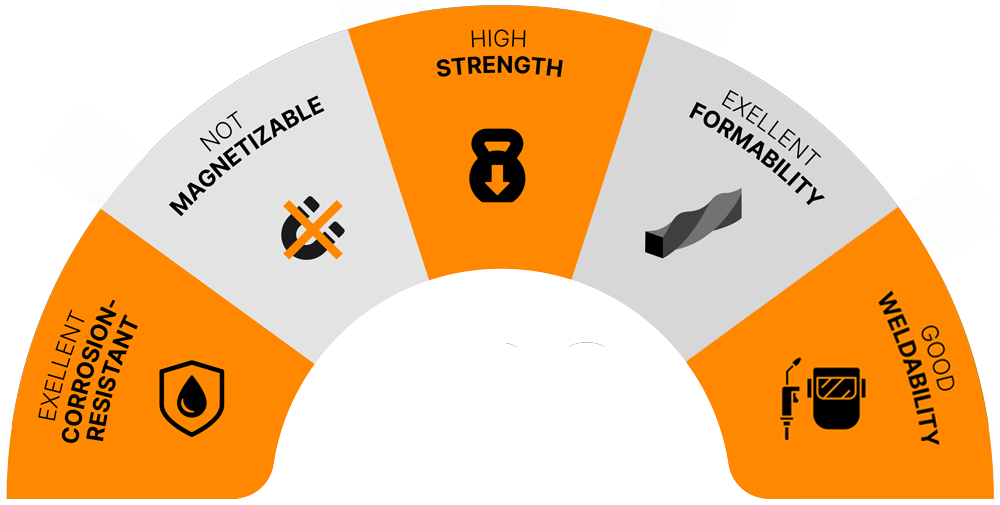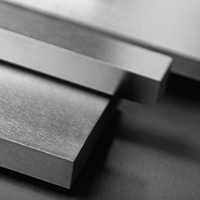300-Series Stainless Steel - Excellent Corrosion Resistance

AISI (American Iron and Steel Industry) and SAE (Society of Automotive Engineers) classifies the 300 series stainless steel as austenitic chromium nickel and chromium nickel molybdenum steel. They have a high corrosion resistance which benefits the food industry, medical industry and chemical as well as the pharmaceutical industry to name just a few.

WHAT IS THE 300 SERIES STAINLESS STEEL?
The 300 stainless steel series has a mass fraction of Chromium of at least 16 % and Nickel between 8 and 20 %. These steels have a great blend of strength, ductility and corrosion resistance which make them ideal for surgical instruments or make them a food grade stainless steel for food safe storage.
As an austenitic stainless steel (face-centered cubic crystal structure) the 300 series is one of five classes defining the stainless steel groups and is not hardenable by heat treatment but by cold work. Next to austenitic stainless steel there are ferritic and martensitic stainless steels as well as duplexes and precipitation hardened.
The groups are defined by their microstructure which is determined by their added alloys. Austenitic steel grades have a center faceing cubic crystal structure which stays the same at all temperatures and ensures excellent formability and good weldability.
WHY CHOOSE STAINLESS STEEL 300 SERIES?
In comparison to the 400 stainless steel series and 200s the 300 series has better corrosion resistance, better ductility, high and low temperature resistance and weldability.
Stainless steel 300 is not magnetizable and does not harden by heat treatment. This group of stainless steel ist hardenable only by cold work.
With its high chromium content austenitic steels have a thin film of protection, a passive chromium oxide layer, that protects the steel from external damages. The protective layer repairs itself as long as there is enough oxygen content in the air or water. With proper aftercare and maintenance stainless steel 300 has a great longevity.
Which grades of the 300 series stainless steel do we carry?
In addition to the most commonly used 18/10 (304) with a chromium content of 18 % and 8 % nickel, there are other stainless steels in the 300 series we carry in our portfolio.
Please find them in the 300-series table below with the level of corrosion resistance (1 low, 6 high), application examples and chromium and nickel content.
Grade | Corrosion resistance 1- 6 | Application (examples) | Chromium Content | Nickel Content |
303 | 6 | Food industry, kitchen equipment,decorations, mechanical engineering | 17 - 19 % | 8 - 10 % |
304 | 6 | Fittings industry, decorations, food and beverage industry, cosmetics processing | 17.5 - 19.5 % | 8 - 10.5 % |
314 | 6 | Chemical industry, oil industry, furnace construction, heat conductors | 24 - 26 % | 19 - 22 % |
316 / 316L | 6 | Food industry, offshore, decorative uses, pharmaceutical industry | 16.5 - 18.5 % | 10 - 13 % |
316Ti | 6 | Medical technology, pharmaceutical industry, food industry, paper industry | 16.5 - 18.5 % | 10.5 - 13.5 % |
SUMMARY
Stainless steel series 300 can be used in a wide variety of industries like the food and beverage industry but also in the chemical and oil industry. Its chromium and nickel content give this group a good processability and corrosion resistance in corrosive environments.
Austenitic stainless steel
Very good corrosion resistance
Good strength
Formability
Ductility
Durable across a wide range of temperatures
Not magnetic


